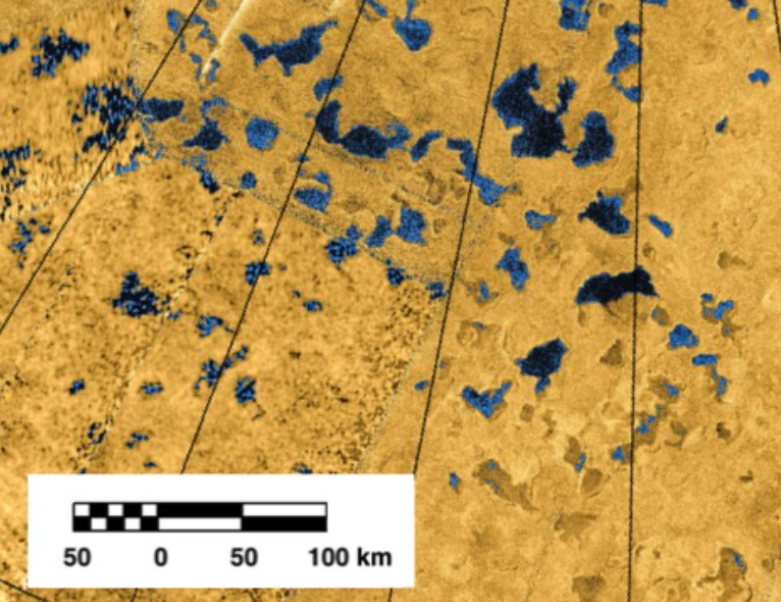
Credit: NASA/JPL-Caltech/ASI/USGS (Modified from original)
Lakes on Saturn’s moon Titan, composed of methane, ethane, and nitrogen rather than water, experience density driven stratification, forming layers similar to lakes on Earth. However, whereas lakes on Earth stratify in response to temperature, Titan’s lakes stratify solely due to the strange chemical interactions between its surface liquids and atmosphere, says a paper by Planetary Science Institute Research Scientist Jordan Steckloff.
Stratification occurs when different parts of a lake have different densities, with the less dense layer floating atop the denser layer...
Read More









Recent Comments